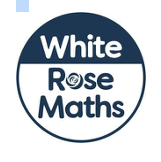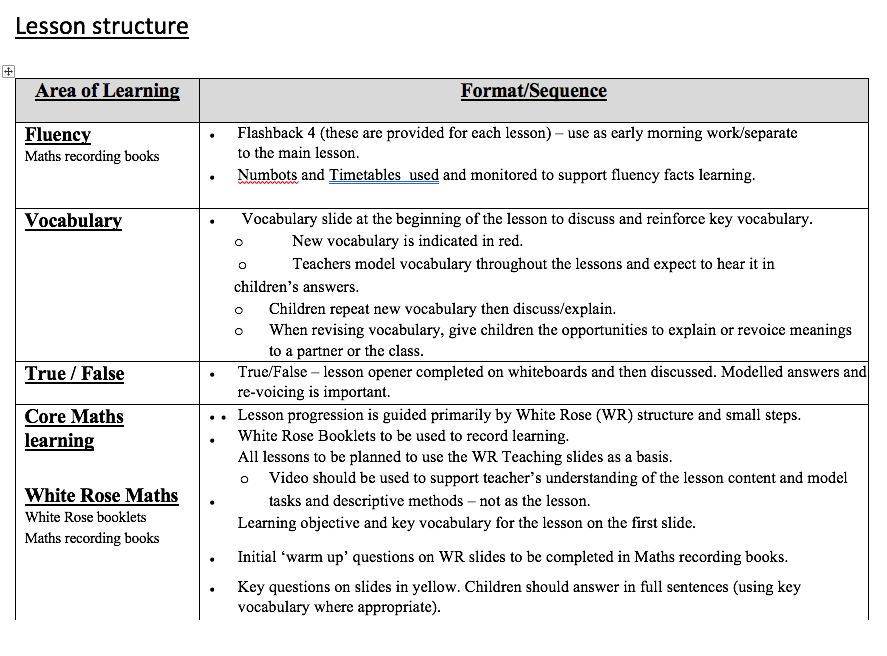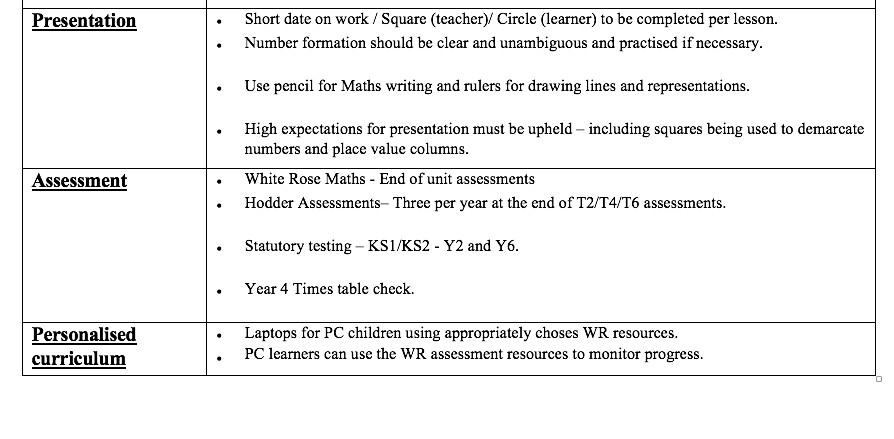﷽

INTENT
We understand that our learners come from various backgrounds with varying exposure to mathematical concepts and practical experience. As a result, they require robust and clear progression through mathematical concepts and support with learning. Our Maths teaching aims to deliver the core aims of the National Curriculum – both in the mathematics lessons and across the curriculum as a whole. Our children will be taught to be confident, successful and proficient mathematicians who can apply their Maths to other contexts and situations. We want our children to leave Primary school ‘Secondary ready’, with excellent foundations for future learning.
IMPLEMENTATION
Mathematics at Assunnah 2021-2024
At Assunnah Primary School, we use White Rose Maths schemes of learning, and a modified version of their resources in order to provide a comprehensive and expertly designed journey though the world of Mathematics. White Rose is based on a small steps approach that keeps all learners together. By using the resources across the school we can ensure consistency of the mathematical elements and comprehensive coverage of the curriculum. We believe that this approach will facilitate consistent delivery of Mathematics across the school and across the inevitable ability range within year groups. It is also designed to support mathematicians who require more time and visual representation to grasp fundamental concepts and those who require challenging further to achieve Greater Depth.
White Rose Resources support us to provide
- CPA (Concrete / Pictoral / Abstract) representations.
- Variation (Procedural / Conceptural).
- Logical and effective small steps.
- Manipulative usage.
White Rose resources support:
- All learners through a whole class learning approach.
- EYFS stage learning.
- Visual representation designed to show concepts clearly.
- Re-visiting of concepts.
- Bar models and PPW models for problem solving.
- Clear progression of calculation.
- Fluency of calculation and concept with ‘Flashback 4’ questions
Manipulatives are:
- Used purposefully and appropriately.
- They are available for appropriate lessons – this builds a mental picture of a mathematical concept.
- Manipulative use develops through concepts as the learner moves from EYFS to Y6
White Rose uses the Teaching for Mastery model as illustrated below. This has been developed by the NCETM NCETM ‘Teaching for mastery’

Concrete – Pictorial – Abstract teaching strategy
Children are encouraged to solve problems each day through the use of concrete resources, pictorial representations and abstract thinking. (Outlined below)

Concrete is the ‘doing’ stage, using concrete objects to solve problems. It brings concepts to life as children can be hands-on and use physical objects to aid them in developing their understanding.
Pictorial is the ‘seeing’ stage, where representations of the objects are used to support learning. This

stage encourages children to make a mental connection between the physical object and abstract levels of understanding by drawing or looking at pictures, circles, diagrams, or models representing the objects in the problem. Abstract is the ‘symbolic’ stage, where children are able to use abstract symbols to model and solve Maths problems.


 Other elements
Other elements
Fluency – Number facts
It is critical that children know the number facts in line with their year group and the maths they are learning. Without secure number facts, learners have to spend too much processing time calculating rather than investigating and practising new concepts. Subsequent years build on that experience. The required knowledge is outlined in the KIRFS (Key Instant Recall Facts) document.
EYFS
EYFS follow the White Rose schemes of learning – principally securing the representations of numbers up to 10 and recognising number to 20. Children are encouraged to spot patterns and identify differences through variation. EYFS children begin their fluency journey by noticing and recalling numbers up to 20. EYFS practise is predicated on exploration and discovery with songs and repetition to secure foundational knowledge.
Timestables
At Assunnah Primary , children learn about times tables in lots of ways during maths lessons. The children memorise times-table counting, use practical equipment, solve worded problems, play times-table games and many other active ways. The challenges are one way for the children to show they can solve times-table questions quickly and accurately. If a child is struggling with the weekly challenge, this will prompt the class teacher to see that the child may need additional support.
My child can complete the challenge at home but not at school
This can happen and is nothing to worry about. When they do the challenge in school, they have the added task of needing to focus on the challenge with other things happening around them. The good news is that if they can complete the challenge at home, then they will soon be able to do it at school
How can we help at home?
Focus on helping your child to answer accurately. At first you might need to model ways to find the answer. You could use some of the games and links below to support this.
Expectation for each year group
In Year 2, the aim is to have a secure understanding of levels 1 to 3 (the 2x, 5x and 10x tables). Children can proceed beyond level 3 but at intervals throughout the year they will be required to repeat the first three levels to fully consolidate this learning.
In Years 3 & 4 the aim is to work on levels up to level 9. There is an expectation for children to be able to memorise fluently and accurately times tables up to 12×12 by the end of Year 4. In Years 5 & 6 the aim is to apply their times table knowledge in lots of different ways using all the levels.
IMPACT
- Through the White Rose learning journey and the clear small steps approach, the teachers, support staff and pupils assess their learning continuously throughout the lesson.
- At the end of the unit, block a tasks are completed, where children can reflect on their knowledge and understanding.
- Three formal assessments take place in a year using Hodder PUMA assessments.
- We are developing our assessment systems to enable teachers to make informed judgements about the depth of learning and the progress learners have made over time.
Monitoring and Evaluation
The following elements will be monitored
- Planning (PowerPoint of each lesson and sequence)
- Children’s books
- Pupil conferencing and classroom practice visits through Learning Walks.
This monitoring will be fed back to staff and governors.
Learning Walks will be used to monitor classroom practice – including:
- Learning walls
- Pupil voice
- Delivery of learning
- TA provision including intervention
- Timetables Competitions
